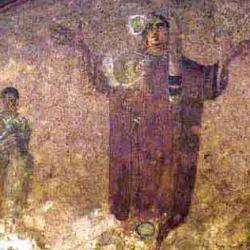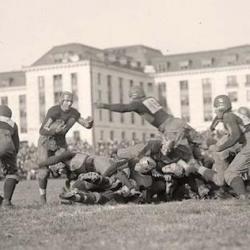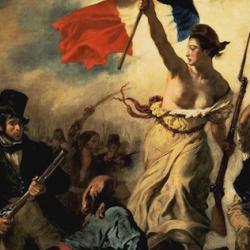Robert Taft (“Eastern Presuppositions” and Western Liturgical Reform) credits the Melkite patriarch and bishops with exercising a disproportionate influence on the direction of reform at Vatican II, due to their “remarkable imaginative and universal vision.” They were the first to state that the council should avoid definitions and condemnations, and also presented an agenda for reform that was largely adopted by the council as a whole: “liturgy in the vernacular; eucharistic concelebration and communion under both species in the Latin liturgy; the permanent diaconate; the establishment of what ultimately became the Synod of Bishops held periodically in Rome; the Secretariat (now Pontifical Council) for Christian Unity; new attitudes and a less offensive ecumenical vocabulary in dealing with non-Catholic Christians, especially the Orthodox churches; the recognition and acceptance of eastern Catholic communities for what they are, distinct ‘churches,’ not just Indian reservations called ‘rites,’ an ecclesiology ultimately canonized by the Council documents concerning the eastern Catholic churches.”
Everyone at the time, Taft argues, saw the need for liturgical reform: “Present-day nostalgia for what is inaccurately referred to as the Tridentine rite is the luxury of those who, not having been around at that time, do not have their thought processes inconvenienced by such things as facts. The need for liturgical renewal was obvious to everyone at Vatican II except the foolish.” But the eastern influence on the direction of reform was by no means pre-determined. Powerful voices within the Catholic liturgical movement were strongly opposed to eastern liturgies.
What led the Council to turn east was what Taft calls “the myth of eastern liturgy.” He briefly traces how the “eastern liturgy” was “invented” by the Catholic church, both as a target for polemics and as a standard by which to measure the Catholic liturgy. After World War I, “Catholic enthusiasts like the Benedictines of Amay/Chevetogne, among them Olivier Rousseau, one of the early historians of the liturgical movement, will produce an equally romantic lyrical vision of eastern liturgy that has lasted more or less until our own day.”
In short, “the west has tended to define eastern liturgy in terms of what it perceives itself as lacking.” It’s not that the Catholic church has accepted nothing from the east: “It would be easy to make a list of things in the pre- and post-Vatican II Roman Catholic liturgical renewal that were directly inspired by the east: the restoration of Holy Week and the Easter Vigil under Pius XII; liturgy in the vernacular; the Spirit-epiclesis in the new anaphoras; eucharistic concelebration; communion under both species; the permanent (and married) diaconate; the recomposition of the ancient unity of Christian initiation in the rite of Christian initiation of adults; revisions in the ordination and confirmation rites; and, the (in my view largely unsuccessful) attempts to restore the liturgy of the hours.”
Yet Taft thinks that the process is not so really a matter of imitating the east as “deciding what should be done on the basis of several factors, above all perceived pastoral need, and then finding justification and support in patristic and eastern precedents as interpreted – even reinterpreted – in the light of those perceived present needs.” Catholic liturgists don’t want to “return” to Orthodoxy; instead, “western Christians were engaged in ‘imagining’ an Orthodoxy, just as modern Greece likes to “imagine” that it is the sole repository of the classical hellenic heritage, and just as Edward W. Said showed, apropos of the Middle East, that nineteenth-century western orientalists ‘imagined’ an Orient that is not a place but an idea, an idea that is basically an invention of the European orientalists.” There is nothing nefarious here. It simply means that the “western view of eastern liturgy, the commonplaces of its virtues, are simply a mirror of our own deepest longings.”
So, what did the Catholic reformers find in the Eastern liturgy that met their own perceived lack? Taft insists that he is not “one of those romantics who considers the east—for heaven only knows what imagined reasons – to possess some sort of traditional superiority, a deeper spirituality, a more ancient and traditional monasticism, a more faithfully apostolic liturgy.” He dismisses these as “nothing but cliches.”
Yet western Christians do have much to learn from the east, and Taft enumerates several contributions of eastern liturgical piety to the western church. Eastern liturgies are more Christologically balanced:”for the Christian east, Christ remains the awesome Pantokrator, before whose sacred mysteries the worshiper bows down in reverential awe. But Christ is also the philanthroposlchelovekoljubec, the one who loves humankind, loved us, indeed, unto death on the cross. He is the kenotic Jesus of Russian piety, the Jesus of Philippians 2.” Eastern liturgies are “radically Trinitarian,” exemplified in prayer: ” eastern prayer is explicitly and consciously trinitarian in ways that western liturgical prayer is not. I am not talking about phrases, the repetition of trinitarian formulae like doxologies, but about the liturgie profonde, which in the east simply cannot be regularly prayed without the attentive worshiper becoming imbued with a piety that remains trinitarian through and through. That, in my view, is simply not true of the west, where the Holy Spirit, though professed, is just not a conscious operative factor in a radically Christological liturgical piety.”
The Orthodox liturgical traditions are also less apt to “instrumentalize” worship by highlighting human need. The liturgy assumes that God is to be worshiped simply because He is God. And that “indifference” is expressed in the “holism” of eastern liturgy: “Eastern liturgy has created and retained a synthesis of ritual, art, church, design, and symbolic structure that may at times seem inflexible, but which permits it to do what liturgy is supposed to do without the self-consciousness of present-day liturgy in the west. For liturgy serves no purpose outside itself. Like a living language, it cannot be reduced to sociology or anthropology; it cannot be invented or created; it simply is.”
Taft is no basher of scholasticism, but he argues that late scholasticism produced “an ever more aggressive Catholic west with a narrowing of vision that rendered it incapable of understanding the east.” He cites the example of the “hylomorphic theory of the sacraments,” which he described as “one more Latin novelty foreign to the undivided church of the first millennium.” For Taft, the Latins have the right to explain their tradition as they please. The problem arises when “Latins in the late scholastic period . . . elevate their own medieval departures from the common tradition into a norm, then use it to challenge those who had simply continued to believe as they always had.”














